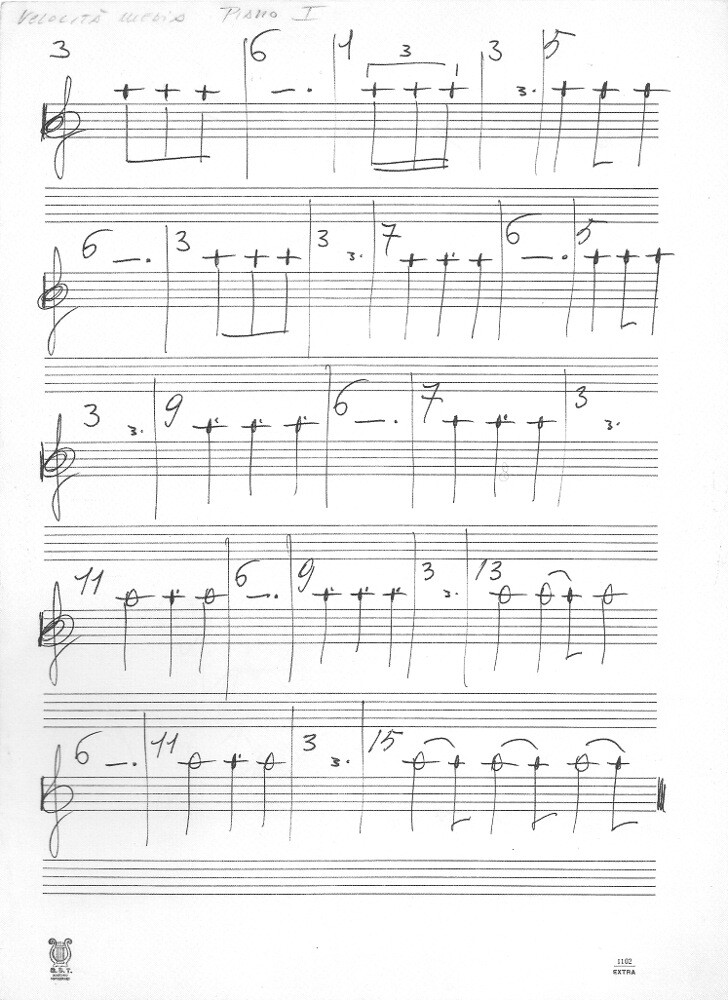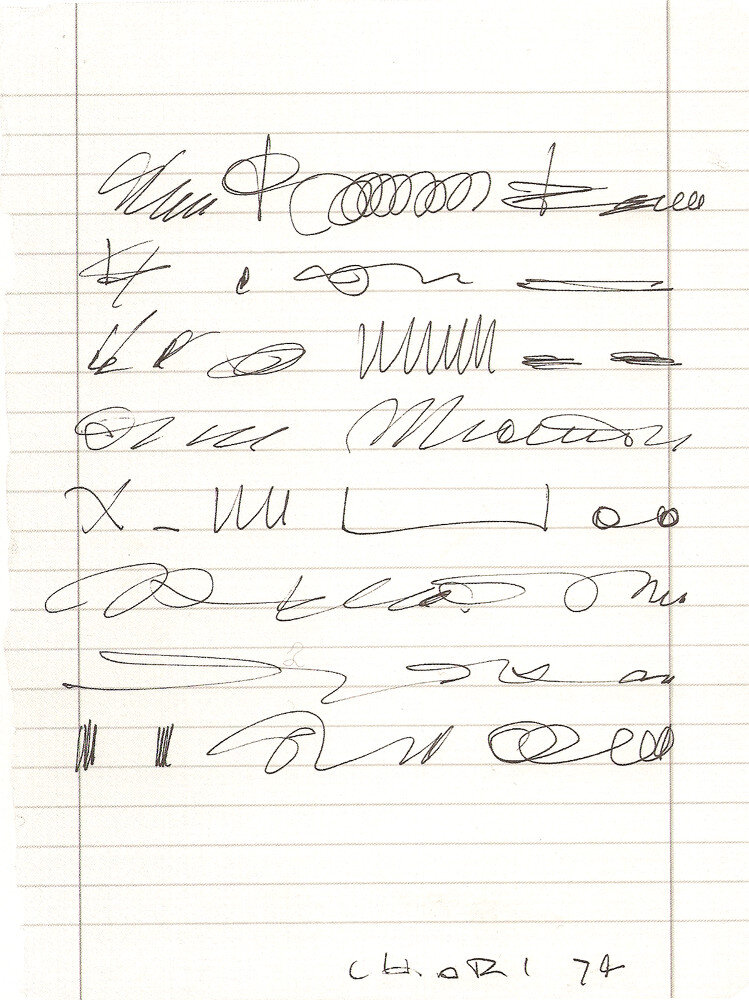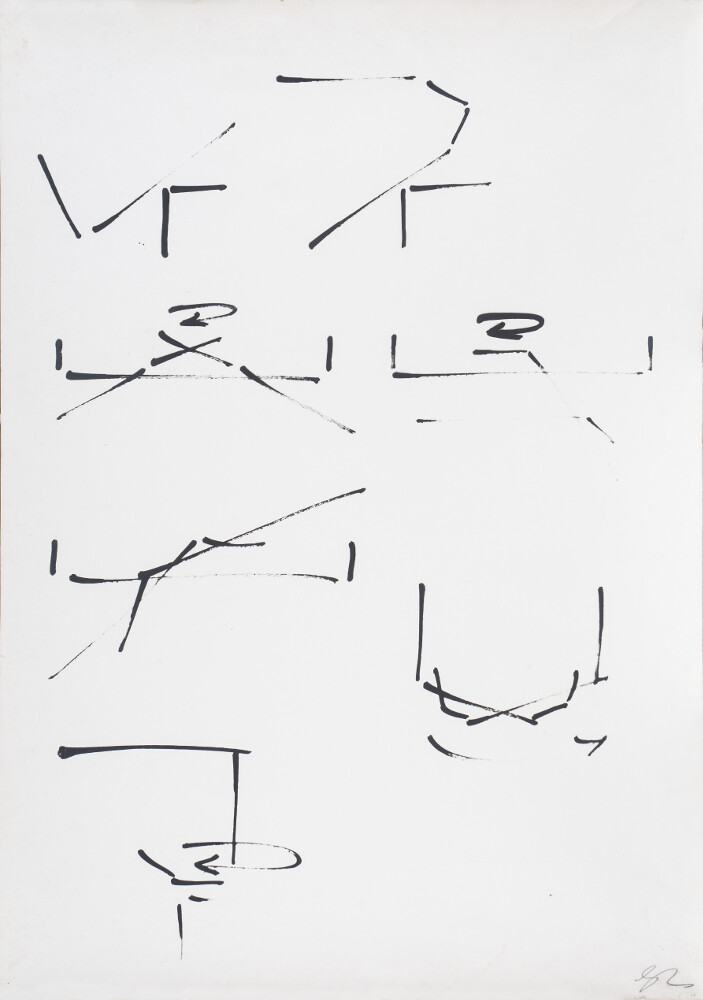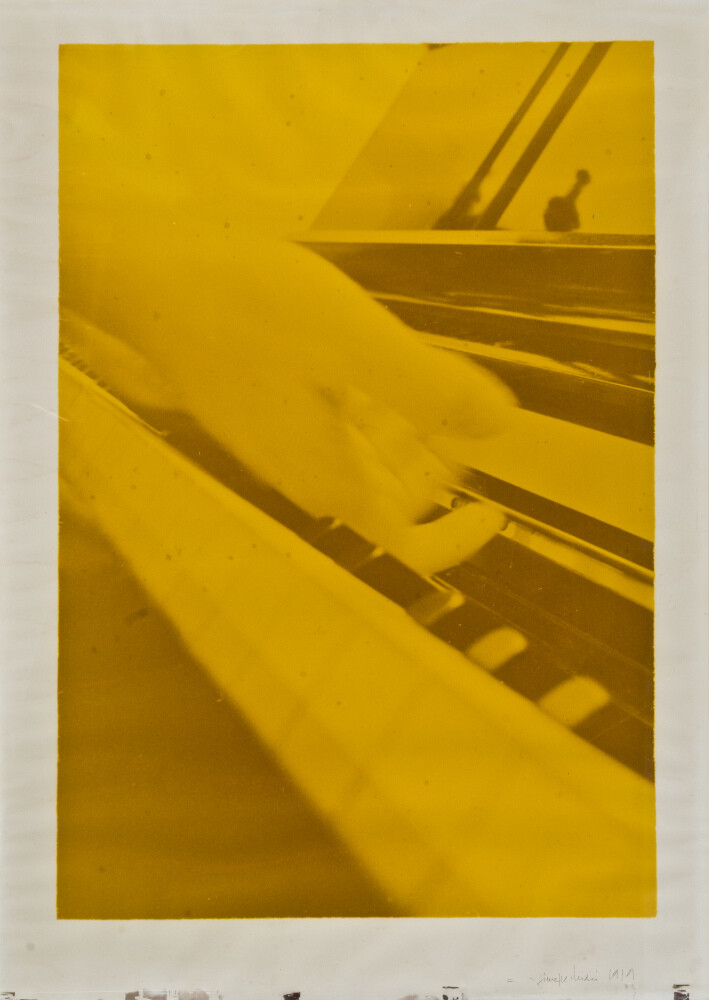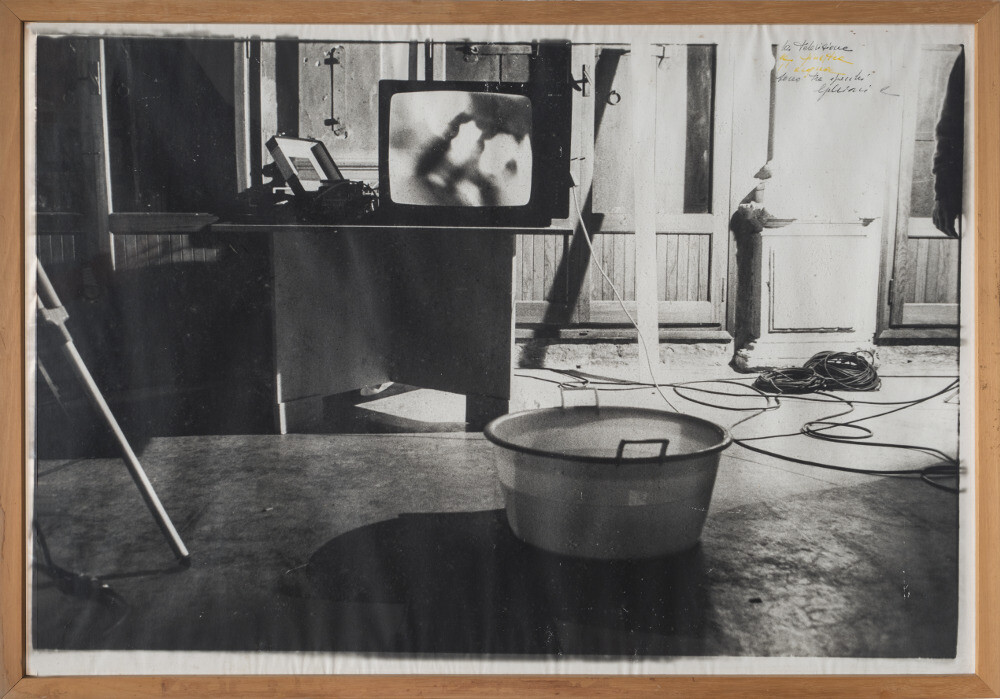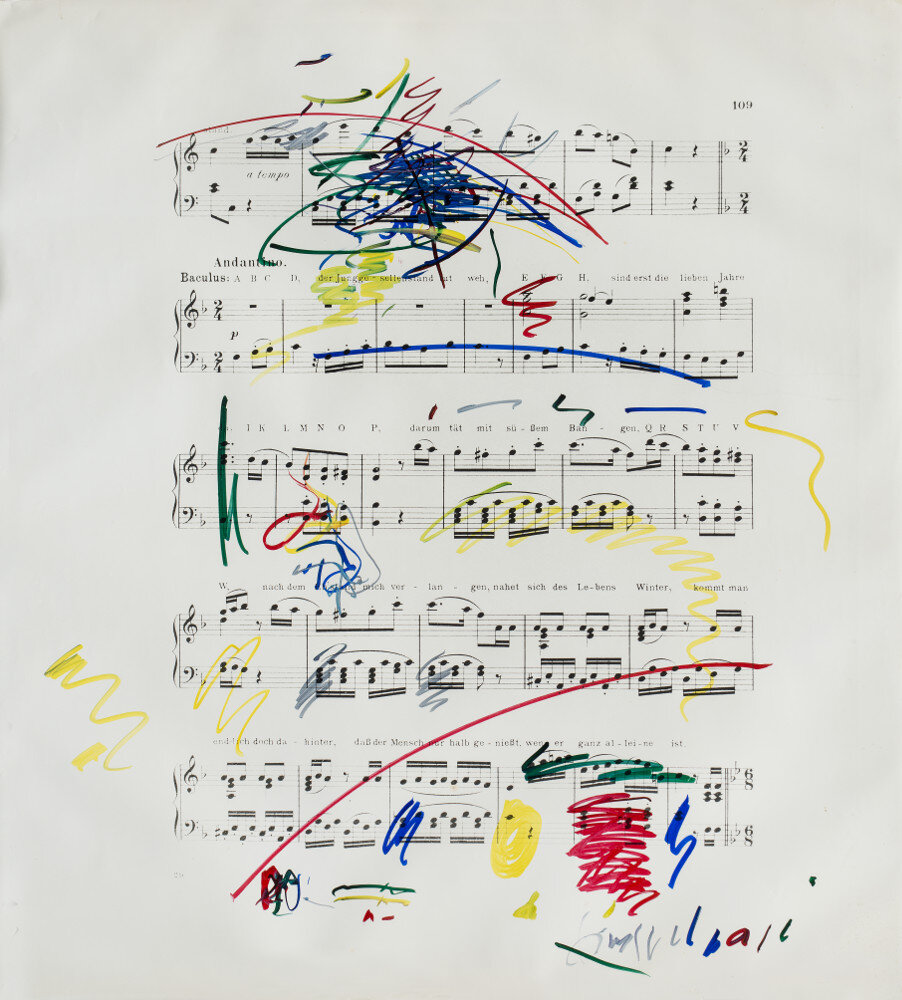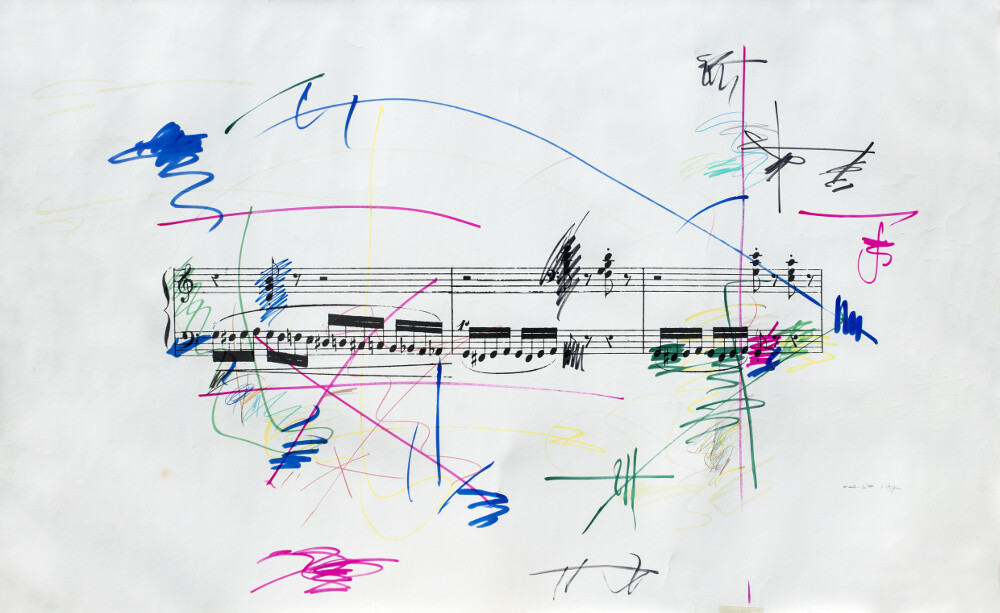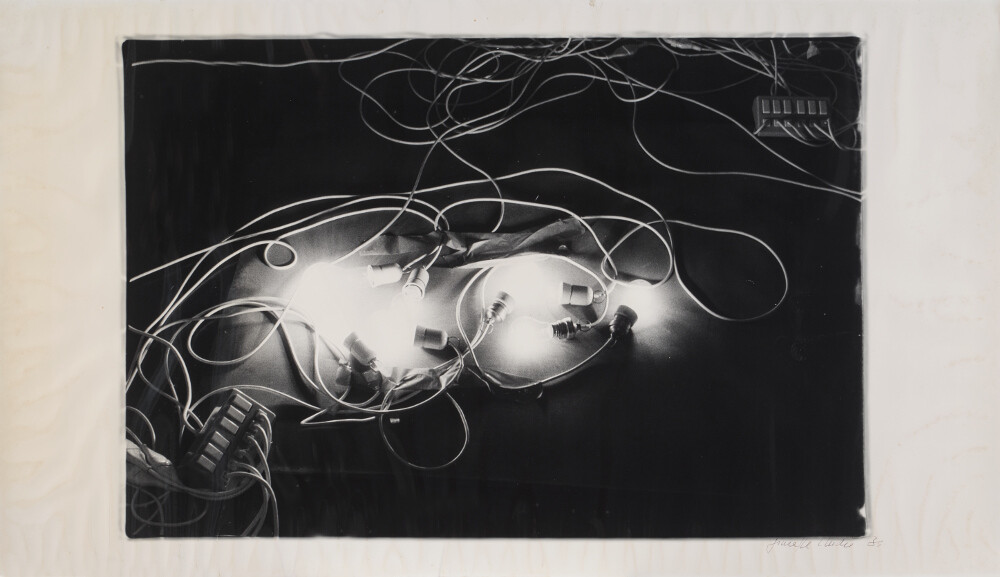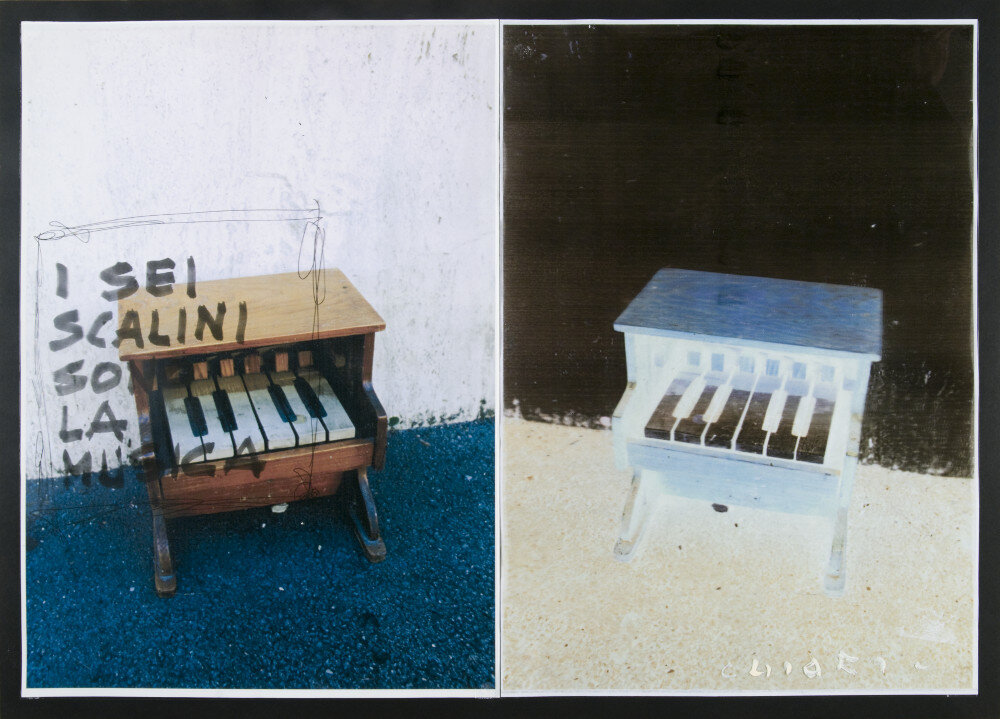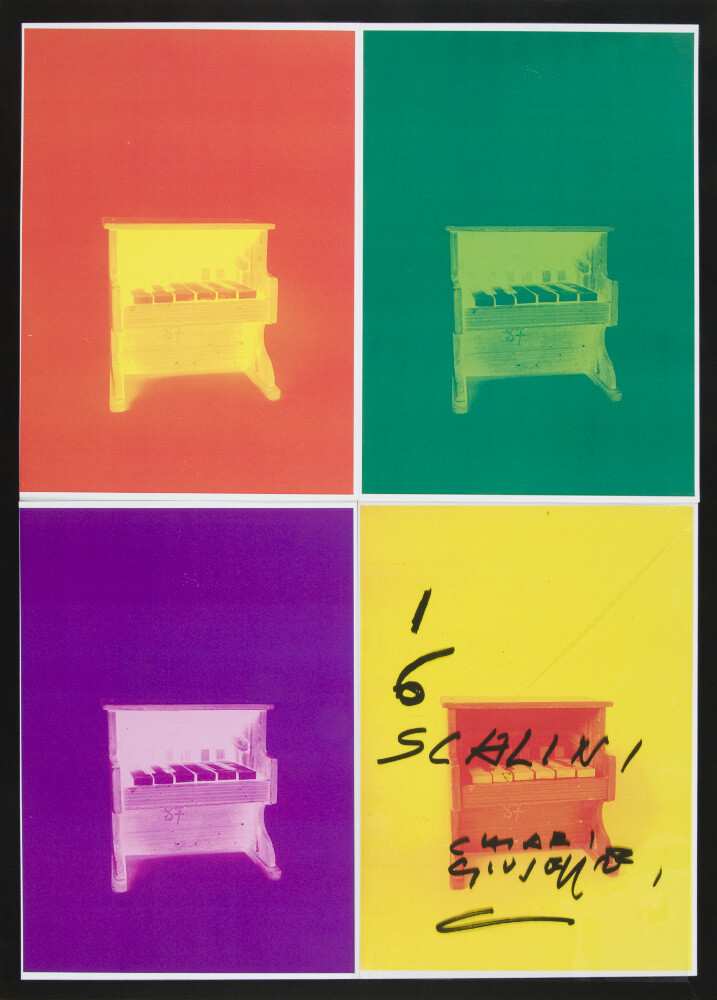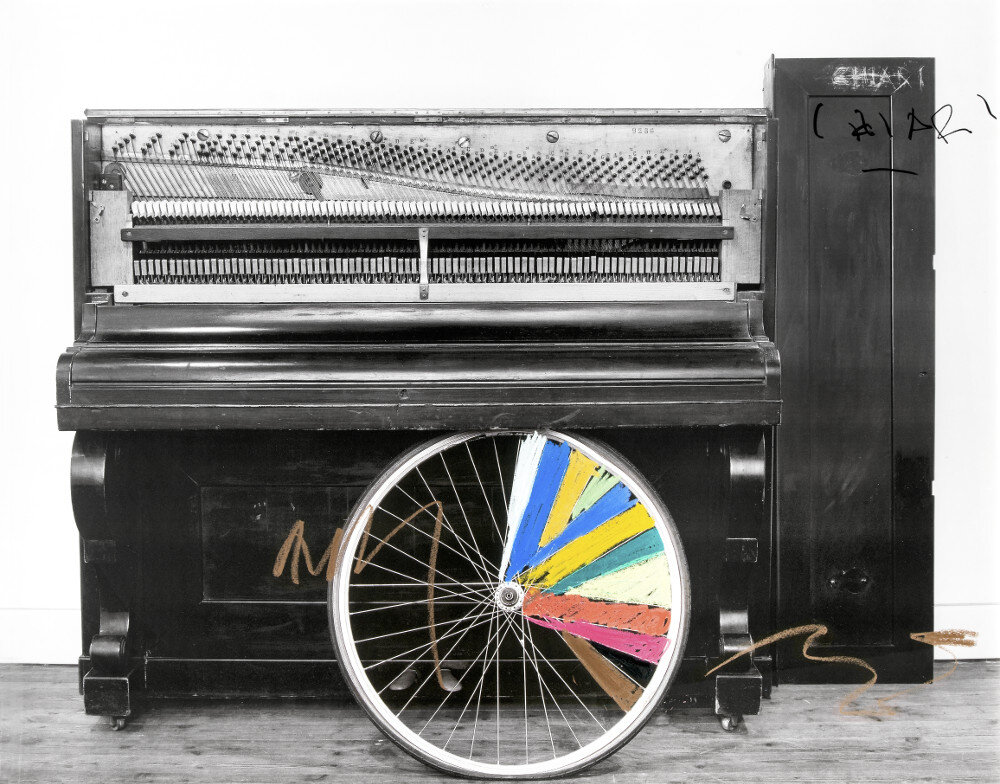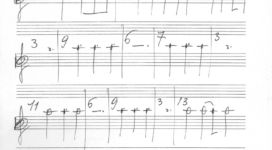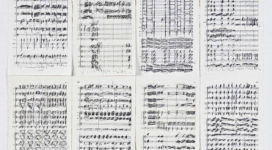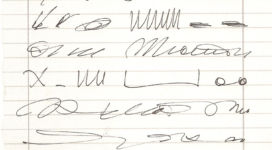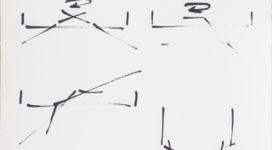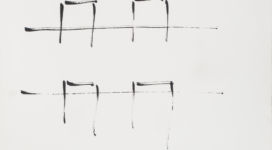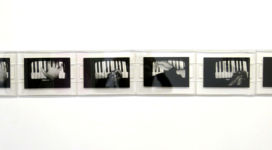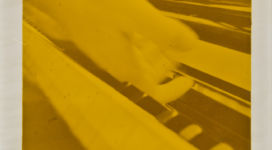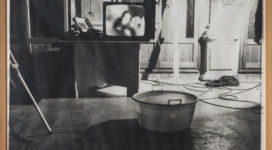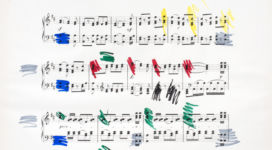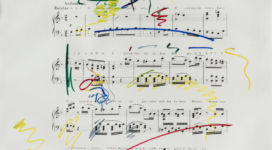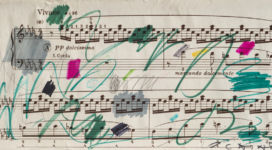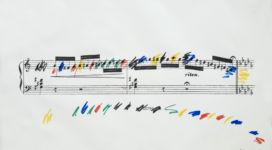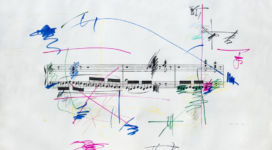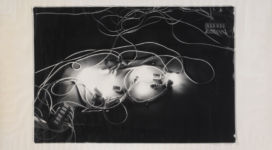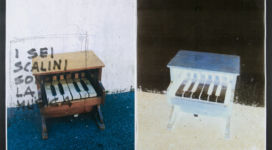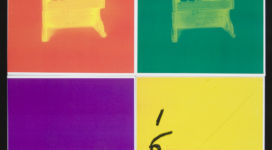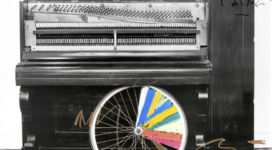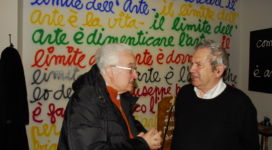| GIUSEPPE CHIARI | Exhibition 2017 | |
| Artissima 2011 | ||
| Exhibition 2010 | ||
| Exhibition 2006 | ||
| Catalogs |
Giuseppe Chiari was born in Florence on September 26th 1926. He took a degree in Engineering while studying piano and composition privately. After founding a Jazz Club in Florence in 1947, in 1950 he began to compose on rational and mathematical bases. In 1960 he was one of the co-founders, with Pietro Grossi, of the association Vita Musicale Contemporanea, chaired by the physicist Giuliano Toraldo di Francia and patronised, among others, by Sylvano Bussotti and Heinz Klaus Metzger; the latter introduced him to the international avant-garde. With Bussotti he organised in 1962 the travelling exhibition Musica e segno (Galleria Numero, Rome, and Creative and Performing Art Center, Buffalo); in 1964 he coordinated with Daniela Palazzoli and Gianni-Emilio Simonetti the exhibition Gesto e segno at the Galleria Blu in Milan.
In September 1962 Frederic Rzewski performed his opera Gesti sul piano at the Fluxus Internationale Festspiele Neuester Musik in Wiesbaden and, following the publication of La strada (1965) edited by George Maciunas, Chiari’s name became indissolubly integrated into the activities of the Fluxus group. In 1963, always Rzewski performed his opera of action music Teatrino at the Judson Hall in New York during the First Avant Garde Festival organised by Charlotte Moorman. That same year, his opera Per arco, performed by Italo Gomez during the IV Settimana internazionale nuova musica in Palermo, caused a sensation; it has been proposed again several times from the following year by Moorman herself, who included the piece in her regular repertoire.
During those same years Chiari began to collaborate with the journal “Marcatré” which included composer Vittorio Gelmetti among its editors for musical content. This was the time when Chiari forged important alliances also with other important representatives of the avant-garde musical scene which, beyond the above cited names, included Jon Phetteplace, Alvin Curran, Richard Teitelbaum – who with Rzewski gave life to the improvisation group Musica Elettronica Viva (MEV) –, Steve Lacy and Cornelius Cardew, with whom he performs in several concerts. In 1963-64 he participated to the foundation of Gruppo 70 in Florence, with visual poets Sergio Salvi, Lamberto Pignotti, Eugenio Miccini and painters Antonio Bueno and Silvio Loffredo; he participated in the conventions Arte e comunicazione and Arte e tecnologia held at the Forte Belvedere, and helped to organise, in December 1963, the first collective show of the group, Tecnologica, at the Galleria Quadrante.
Since 1964 Chiari’s activities entered a new phase: the representation of himself and his works in order to bring about a radical demystification of the existing fracture between author, player and listener. As a logical extension of this performative practice, from 1965 he began to elaborate different Metodi per suonare, which included methods for playing the piano, guitar, water, rattles, bells, stones, video cameras, or for playing by breaking. Each method starts off from objective considerations on the nature of the instruments, of objects and of available matter, and by inverting their functions reciprocally: concrete materials without a specific function assume a musical function; objects devoid of musical function are treated as if they were matter, functionless, or as musical instruments; musical instruments are treated as if they were matter or objects without musical functions.
Starting from this stance, Chiari extended his behavioural reflection to deconstructing the use of media (Video Concert, TV Happening), and to the analytical relationship with the environment in its domestic declinations (from Suonare la stanza to Concerto per luci of the ’90s) as well as the urban and social planning declinations (Suonare la città which debuted during the event called Campo urbano in Como in 1969). The pre-eminence of graphic signs in his scores, as an expedient for defining the processual and non-deterministic logic of his own music, was not unnoticed by John Cage who included Chiari in his monumental anthology Notations published in New York in 1969 by Something Else Press.
Of great significance was, at the end of 1970, his meeting with pianist Giancarlo Cardini, with whom for a short time he performed in duo concerts; subsequently Cardini became one of the more assiduous and reliable interpreters of Chiari’s works.
In parallel to his performative practice, during the early years of the ’70s Chiari embarked in a fertile and since then uninterrupted series of exhibitions, including personal shows which followed upon each other in the following galleries: Milano (Milan, 1970), Il Centro (Naples, 1970), Toselli (Milan, 1971 and 1973), LP 220 (Turin, 1972), René Block (Berlin, 1973); he also participated in important international shows – Biennale internazionale d’arte di Venezia (several editions starting in 1972), Documenta 5 (Kassel, 1972), Contemporanea (Rome, 1974), Projekt 1974 (Cologne, 1974) – he thus asserted his place in the scene of European conceptual art.
He also started on an intense publication activity: in 1969 he published with Lerici Musica senza contrappunto in the series “Marcalibri” edited by Magdalo Mussio; in the following years he also published Senza titolo (Toselli, Milan, 1972), Musica madre (Prearo, Milan, 1973), Arte (Toselli, Milan, 1974), Teatrino (Banco/Nuovi Strumenti, Brescia, 1974) and, edited by Gillo Dorfles, Metodo per suonare (Martano, Turin, 1976). Starting from 1972 the distinctive trait of Chiari’s work becomes clearly defined as the production of “statements” marked in very large letters on various supports and using different techniques (Indian ink, felt-tip pens, chalk, stamps).
In 1976 he took part in the Biennale di Venezia in the section Attualità internazionali 1972-76, where he proposed the performance entitled La confessione. In 1978 he was again invited to the Italian section of the Biennale, where he wrote in chalk on the wall “L’arte è una piccola cosa” (“Art is a small thing”). In 1982 he participated in the exhibition 1962 WiesbadenFLUXUS 1982 in Wiesbaden, a celebration for the twenty years of the Fluxus group. In June 1983 he presented, at the Salone Villa Romana in Florence, the anthological exhibition Music is Easy (Opere 1963-1983), and in 1984 he was invited for the fourth time to the Biennale di Venezia in the section Arte, ambiente, scena, where he showed a videotape. In the same year he published, with Edition Copie in Hannover, the multi-language book Aesthetik. Among the several personal and anthological exhibitions that followed, the most important are Extra, Galleria Vivita, Florence, 1986; Giuseppe Chiari. Opere 1962-1986, Galleria Milano, Milan, 1986; Chiari, Centro Culturale Belvedere, San Leucio (Caserta), 1987; Viva, Studio Leonardi, Genoa, 1988. The collective exhibitions that followed: Happening & Fluxus, Galerie 1900-2000, Paris, 1989, and Ubi Fluxus ibi motus, Ex Granai della Repubblica alle Zitelle, Venice, 1990 (Edizioni Mazzotta) consecrated him as the most respected Italian representative of the Fluxus movement.
At the same time, with the publication of Dubbio sull’armonia (Hopefulmonster, Florence, 1990), Chiari embarks on a thorough documentary research on the “models” of conceptualisation of musical experience, analysing the transitory function and relative sense of the models’ historical affirmation. Such recognition, initiated a few years earlier with the publication of Osservazioni su Zarlino/Riemann (self-published, Florence, 1987) and Biblioteca musicale (self-published, Florence, 1989), was systematically pursued in the books Analisi della parola “Tonalità” secondo F.J. Fétis con una nota su Il caso Monteverde. Firenze 1992 (self-published, Florence, 1996), Helmholtz. Florence, 1992 (Ulisse & Calipso, Naples, 1997), Trattato di musica (Ulisse & Calipso, Naples, 1994), Storia dei modelli musicali. Firenze, 1995 (Meta, Florence, 1996), Indici di libri di musica teorica in ordine temporale storico. Firenze, 1996 (Ulisse & Calipso, Naples, 1999), Storiografia. Florence, 1996 (private phototype), Fantamusicologia (Silenzio, Rome, 1998), and Musicologia triviale (Meta, Florence, 1998). In 1994 he published the book Teoria (Leonardi, Genoa), in which he extended an analogous reflection to the deconstruction of ideological statutes sustaining artistic praxis and its historical and critical reception.
Wide-ranging overviews of his visual production have been presented in numerous exhibitions, among them: Conceptual Music, Palazzo Rocca – Spazio Multimediale per l’Arte Contemporanea ex Chiesa di San Francesco, Chiavari, 1996; Collage, Rocca di Umbertide – Centro per l’Arte Contemporanea, Umbertide (Perugia), 1996; Una canzone, B&D Studio Contemporanea, Milan, 1997; Bianco e nero, Prato, 1998. In 1999 he published a book of sentences: Frasi on occasion of his personal show at the Galleria Martano in Turin. Other important retrospective shows followed, (Musica et cetera, Palazzo Fabroni, Pistoia, 2000-2001; Quit Classical Musik, Kunsthalle Fridericianum, Kassel, 2001; Le scelte trasgressive, Galleria Nazionale d’Arte Moderna, Rome, 2005; Mi hanno cercato, Galleria Il Ponte, Florence, 2006), as well as his regular inclusion in all the main collective exhibitions devoted to the Fluxus movement, not the least being the celebratory exhibition for the group’s fifty years, Fluxus at 50, hosted by the Museum Wiesbaden in 2012.
His discography includes S2FM – Studio di Fonologia Musicale di Firenze: Musica programmata, LP attached to “1985 la Musica”, II, n. 11, March 1986; the CDs Daniele Lombardi, piano: Pennisi – Grossi – Chiari – Cardini – Montis, Edipan PAN CD 3065 (1998); Suono Segno Gesto Visione a Firenze: D. Lombardi – G. Cardini – S. Bussotti – G. Chiari, Fondazione Atopos ATP 009 (2000); Giuseppe Chiari: Antologia 1950-1970, Silenzio Edizioni SEAC01 (2000); Suono Segno Gesto Visione a Firenze 2: P. Grossi – G. Chiari – G. Cardini – A. Mayr – D. Lombardi – M. Aitiani – S. Maltagliati, Fondazione Atopos ATP 010 (2008); Giuseppe Chiari – Piero Mottola: Opere ed emissioni, Gangemi Editore (2010). In 2010 Die Schachtel published in a double LP+CD Edition the album Giuseppe Chiari +/ ̶ Daniele Lombardi Costellazioni (DSART 07+09), documenting the concert held on the 28th of September 2006 at the Saloncino del Teatro della Pergola in Florence, organised in honour of Giuseppe Chiari for his eightieth birthday, with the participation of Frederic Rzewski, Giancarlo Cardini and Daniele Lombardi flanking the author.
Giuseppe Chiari died in Florence on the 9th of May 2007.
Gabriele Bonomo, April 2016
